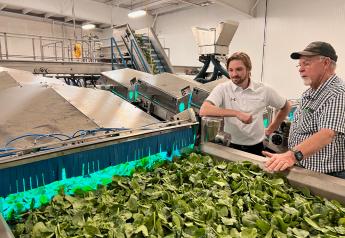Why strawberries are the sweethearts of Valentine’s Day
Did_you_know_about_strawberries
The thought started tickling in the back of my brain a couple of weeks ago when I was editing The Packer’s Southern California strawberry coverage. Wind and rain in late January had caused problems for the region’s crop, leading to tighter supplies for Valentine’s Day than many growers had previously expected.
Why is it that we so closely associate Valentine’s Day with strawberries? I mean, sure, the fruit is sweet. It’s beautiful. It’s red. It’s more or less heart-shaped.
And for most of the country, it can’t be grown in the middle of February — folks like me in the frozen Midwest have Southern California and Florida (and, more recently, Mexico) to thank for the fact that we can even buy fresh strawberries for our valentines. So how did this association between strawberries and romance get started?
Turns out it might be older than you think.
Wild strawberries grow on every continent except Africa, Australia and Antarctica, according to foodreference.com, and were eaten as early as the Middle Stone Age, the websites Vegetarians in Paradise and Antiquity Now state.
The fruit was used for its medicinal qualities in ancient Rome and China, and came to be associated with love and fertility and the goddesses Aphrodite and Venus because of its heart shape, red hue and seed-studded exterior (a feature which, by the way, means it’s not botanically a berry).
Elsewhere in folklore it’s suggested that if two people split a strawberry — or a double strawberry, depending on which source you read — they’ll fall in love.
Strawberries, then, were a “love fruit” long before St. Valentine was born, although there’s no concrete evidence they were deliberately cultivated until around the 1300s, when the French started transferring wild woodland strawberry plants into their gardens.
In South America, strawberry cultivation dates back to at least as early as the 1500s, and Native American cultures, it seems, were already enjoying a precursor to modern strawberry shortcake when Europeans arrived in North America.
It was a French wedding of the North American variety Fragaria virginiana to the Chilean Fragaria chiloensis that eventually led to the modern strawberries we enjoy today, and the French have other associations with love and strawberries, too. Apparently it was once a custom in the French countryside to serve cold strawberry soup to newlyweds as strawberries were thought to be an aphrodisiac.
And in modern times, strawberries are still considered to be a love-stoking food — a fact I learned while researching for this column. According to scientists, there’s no proof that any food will help make romancing ... sweeter, shall we say ... but the ancients did get something right: strawberries are a nutritional powerhouse.
A serving of eight medium berries provides 160% of an adult’s daily value of vitamin C and a significant amount of manganese, as well as smaller amounts of other important nutrients.
Strawberries might not be the food of love some thought they were, but they’re definitely good for you — so grab your sweetie and chow down.
Amelia Freidline is The Packer’s copy and design editor.
For more about the history of strawberries, their cultivation and their place in culture, check out George M. Darrow's fascinating book The Strawberry.
What do strawberries mean to retailers? They're kind of a big deal.







